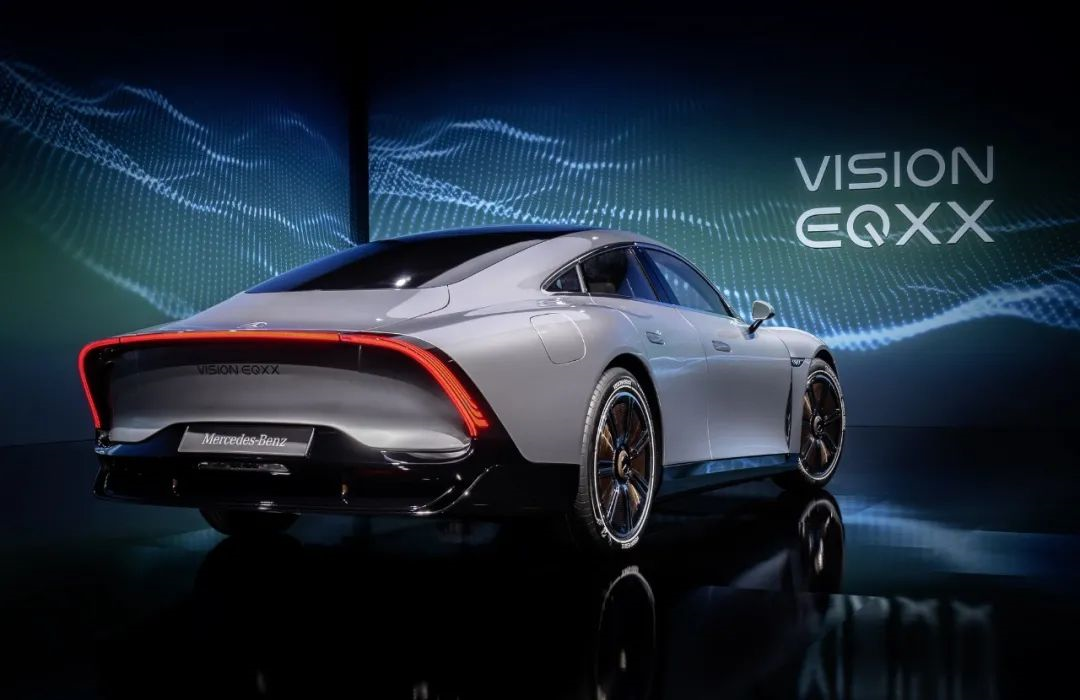Author: Wang Xuan
Perhaps due to the appearance of the Mercedes-Benz VISION EQXX, 1 a.m. on January 4, 2022, Beijing time, will be remembered in history. Over the past decade, Tesla’s actions have forced traditional car companies to make intelligent and electrification transformation as the core strategy for future development, while also “provoking” the imagination of the latter.
When Mercedes-Benz announced that VISION EQXX was an important symbol of their transformation into an electrification and software-driven company, they officially opened the Pandora’s box of all the fantastic ideas about electric vehicles, bringing a refreshing feeling, just like the first time we saw the Mercedes-Benz VISION EQXX.
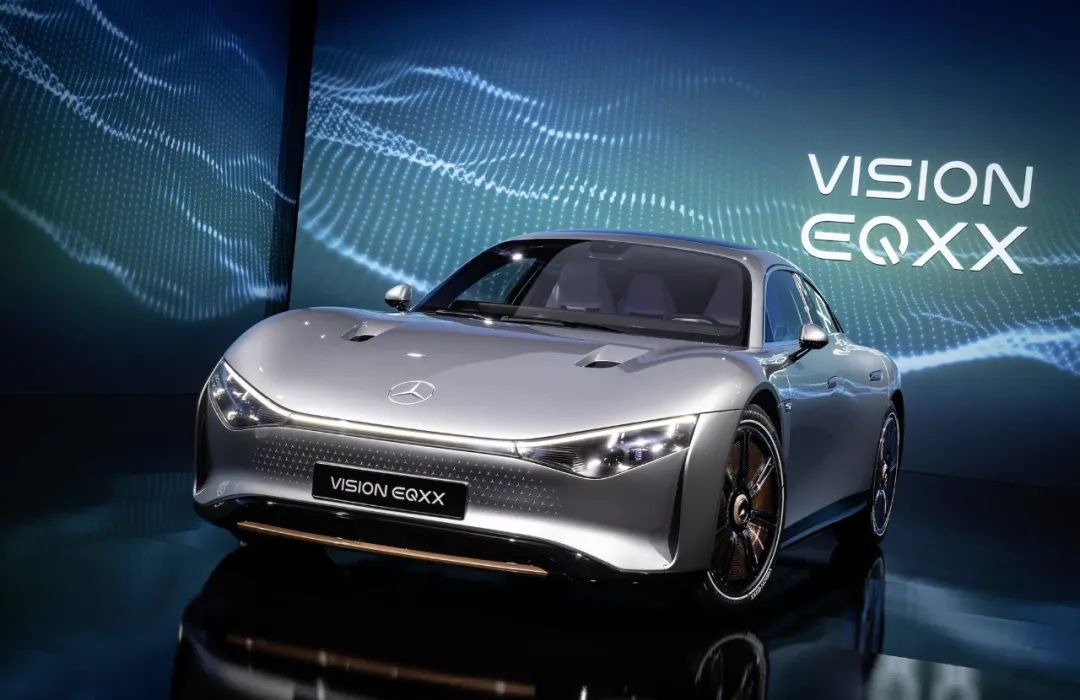
During last night’s press conference, Mercedes-Benz’s current CTO Markus Schäfer said, “EQXX is very close to the product line we will see in 2024. It will be one of the most efficient electric cars available.” Through this sentence, we can get two pieces of information, one is “efficiency,” and the other is close to mass production.
Change the Experience of Electric Vehicle Travel with Higher Efficiency
Efficiency on the Mercedes-Benz VISION EQXX will be reflected in two aspects. The first point is to improve the efficiency of the transmission system and battery management system to solve user’s travel anxiety, the second point is to use the new screen layout and Mercedes-Benz’s zero-level interactive logic to improve the efficiency of user’s interaction in the intelligent cockpit.
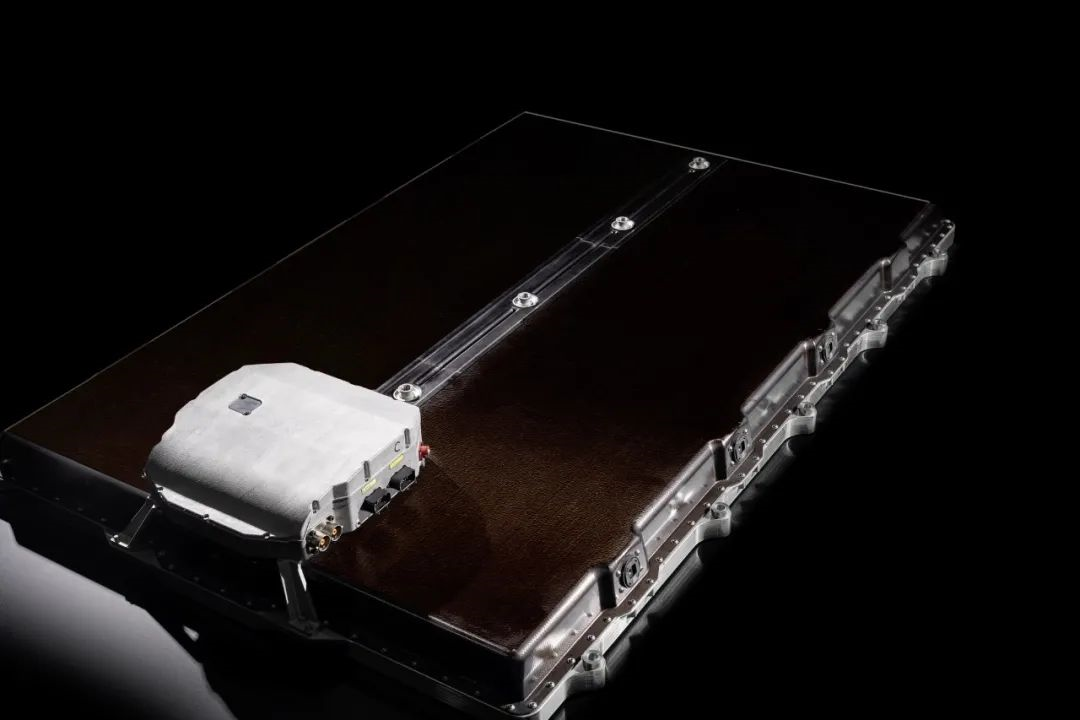
The most noticeable feature of the Mercedes-Benz VISION EQXX is its range performance. Officials said that the single battery charging range of the EQXX exceeds 1,000 kilometers, consuming less than 10 kWh of energy per 100 kilometers, and the overall energy density of the battery pack is less than 100 kWh. In order to achieve such outstanding range performance, Mercedes-Benz reduced the drag coefficient of the EQXX to 0.17cd (the lowest drag coefficient in mass-produced cars is 0.2cd of Mercedes-Benz EQS). At the same time, through lightweight design, battery innovation, and new materials, the car’s range performance has been further improved.
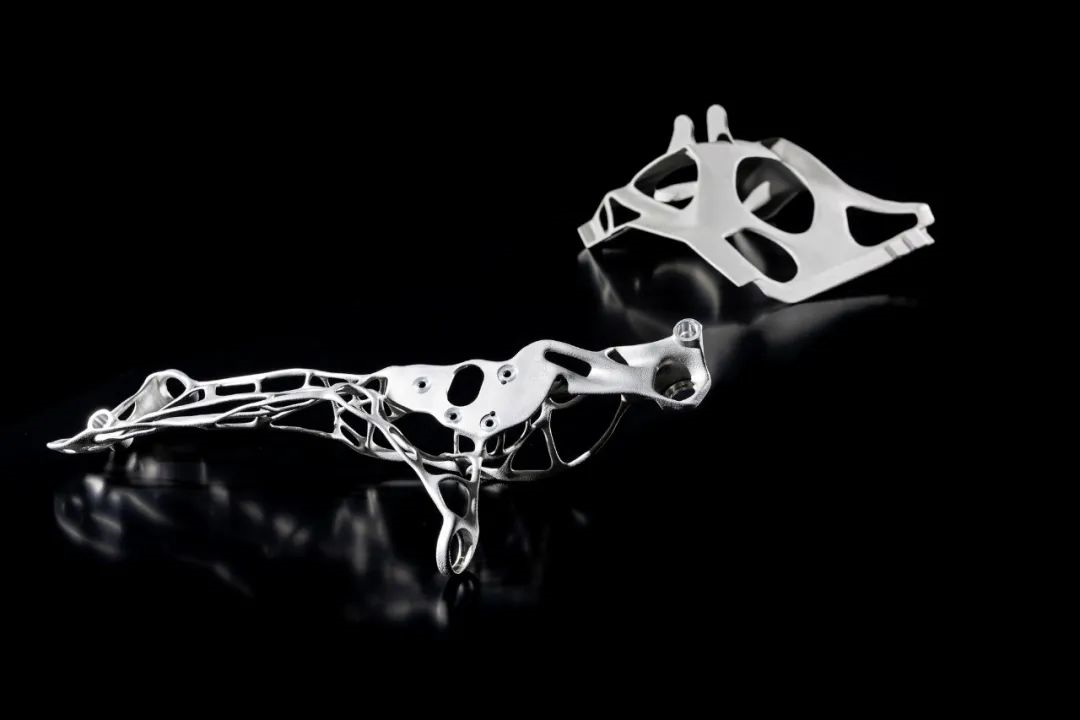 From the information released by Mercedes-Benz as of now, the overall weight of VISION EQXX is about 1.75 tons. Currently, there are few pure electric vehicle models of standard size with a curb weight lower than 2 tons on the market, and the weight of the Porsche Taycan has already reached 2.2 tons. Mercedes-Benz cooperated with innovative startups to use advanced digital tools and 3D printing to reduce material consumption, thereby reducing weight and waste. At the same time, EQXX uses an F1-level lightweight subframe to further reduce the overall weight of the vehicle.
From the information released by Mercedes-Benz as of now, the overall weight of VISION EQXX is about 1.75 tons. Currently, there are few pure electric vehicle models of standard size with a curb weight lower than 2 tons on the market, and the weight of the Porsche Taycan has already reached 2.2 tons. Mercedes-Benz cooperated with innovative startups to use advanced digital tools and 3D printing to reduce material consumption, thereby reducing weight and waste. At the same time, EQXX uses an F1-level lightweight subframe to further reduce the overall weight of the vehicle.
The development of Mercedes-Benz VISION EQXX was assisted by the Mercedes-AMG High Performance Powertrains department, which developed an efficient V6T hybrid power unit for the Mercedes F1 team. The department created an efficient and compact transmission system and lightweight battery pack structure for VISION EQXX, with a transmission efficiency of up to 95%, while the transmission efficiency of mainstream consumer-level electric vehicles is currently around 75%.
In addition, the interior layout of the Mercedes-Benz VISION EQXX concept car adopts a simple and beautiful lightweight design and is extensively equipped with lightweight sustainable materials, ushering in a zero-emission future while ensuring luxury and comfort.
The Mercedes-Benz VISION EQXX concept car’s door handles use biodegradable pure plant silk. The seats are made of two outstanding leather substitutes, one made from cactus raw materials and the other made from mycelium. The carpet is woven from 100% bamboo fiber.
With professional engineering design and Formula 1 thinking, Mercedes’ battery chemists squeezed EQS’s energy into the size of a compact car. The battery pack in the Mercedes-Benz VISION EQXX can accommodate nearly 100 kilowatt hours of energy, but is 50% smaller in volume and 30% lighter than the EQS’s benchmark battery pack.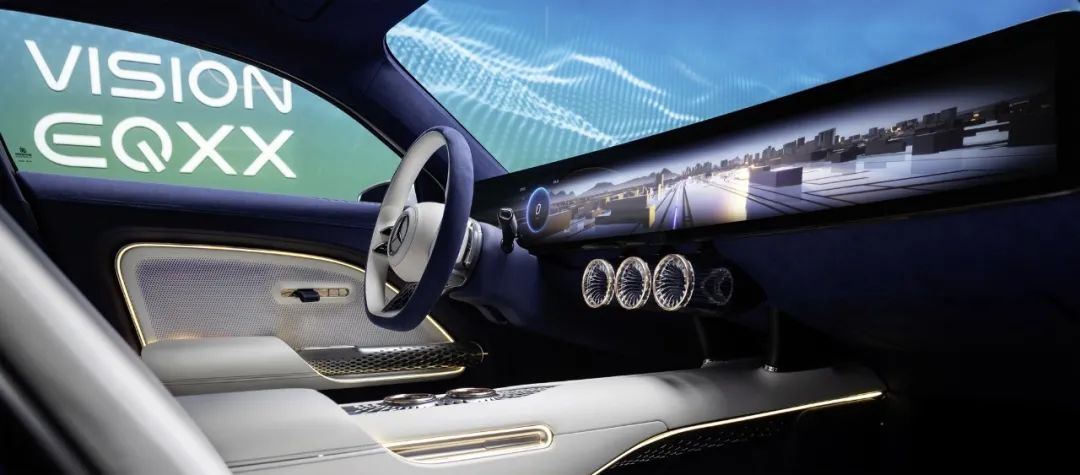
In terms of intelligent cockpit, Mercedes-Benz VISION EQXX concept car is equipped with the brand’s first completely seamless 47.5-inch ultra-thin integrated screen, and introduces game engines and fully optimized user interfaces. The R&D team has also collaborated across boundaries to develop the first 3D real-time navigation system compatible with this screen size. In the 3D city view, the satellite image can be enlarged to a height of 10 meters.
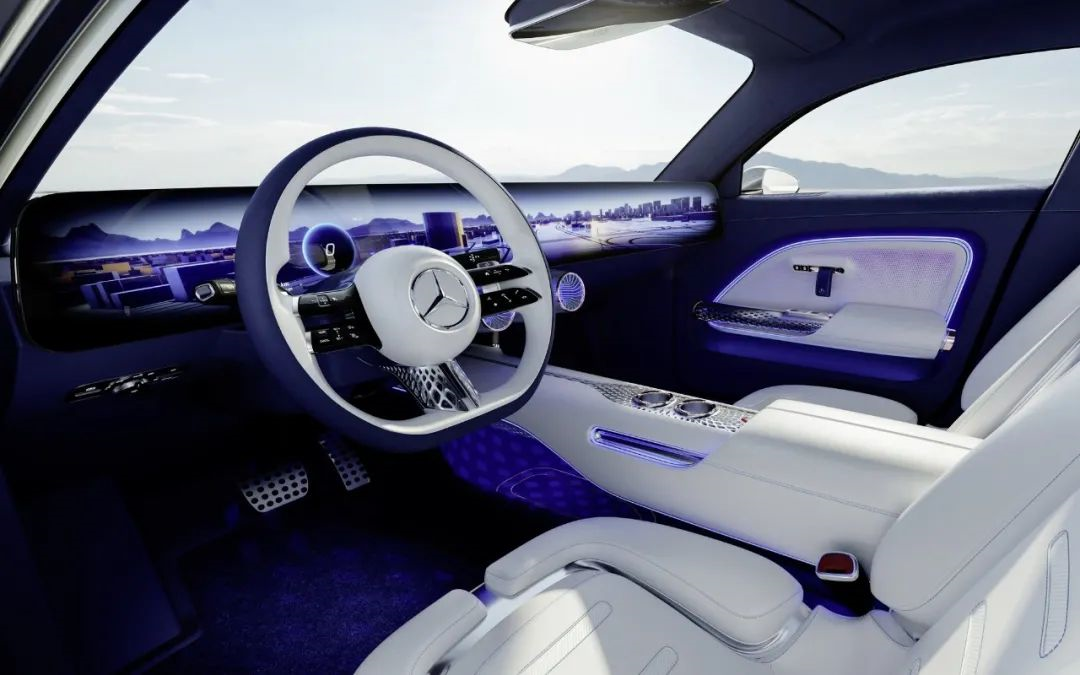
From the perspective of Mercedes-Benz’s human-computer interaction logic, making the screen larger is not simply about “bigger than bigger”, but about better integrating the zero-level interaction concept into it. This is also reflected in the MBUX Hyperscreen of EQS.
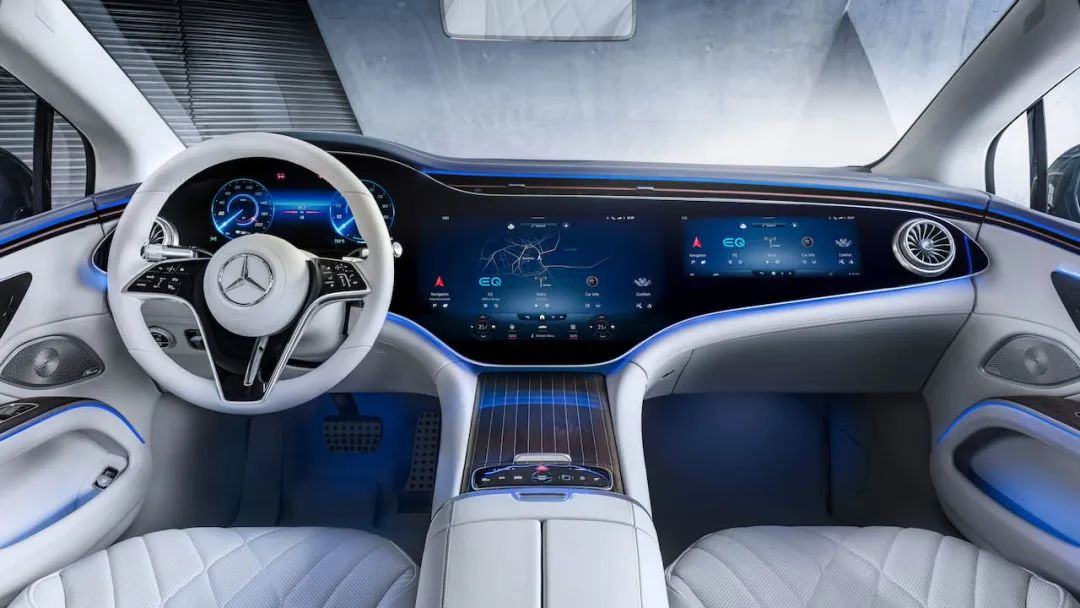
After the screen is enlarged, more information can be displayed in the interface, and the information bar can be made larger to facilitate user selection of target items and reading target information, improving interaction efficiency.
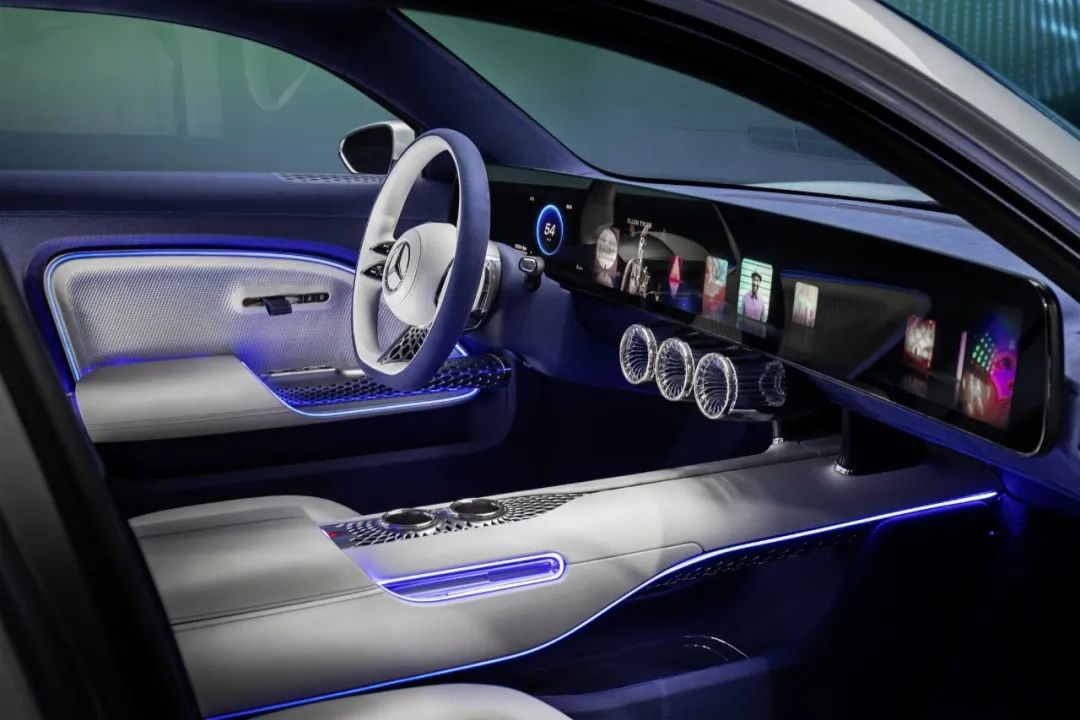
Mercedes-Benz engineers use an innovative information processing method called neural morphological computing, which effectively reduces energy consumption by several orders of magnitude, and increases the wake-up speed of “Hey Mercedes” by 5-10 times that of traditional voice control functions. In the official pictures, we can also see a brand new IP image called “Starnet Assistant”, giving the car an artificial intelligence digital soul and improving the user experience.
Is the drag coefficient of 0.17 Cd worth our carnival?
When discussing the endurance performance of the Mercedes-Benz VISION EQXX earlier, I did not elaborate on its drag coefficient, because I know that everyone cares most about this. So I chose to take it out separately for analysis.
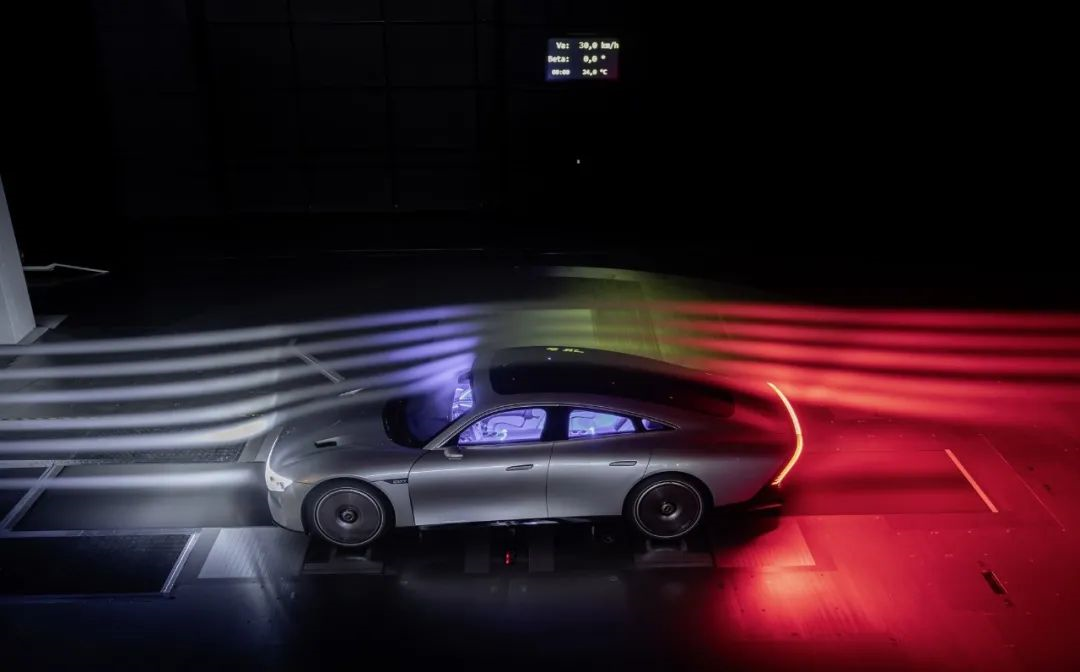
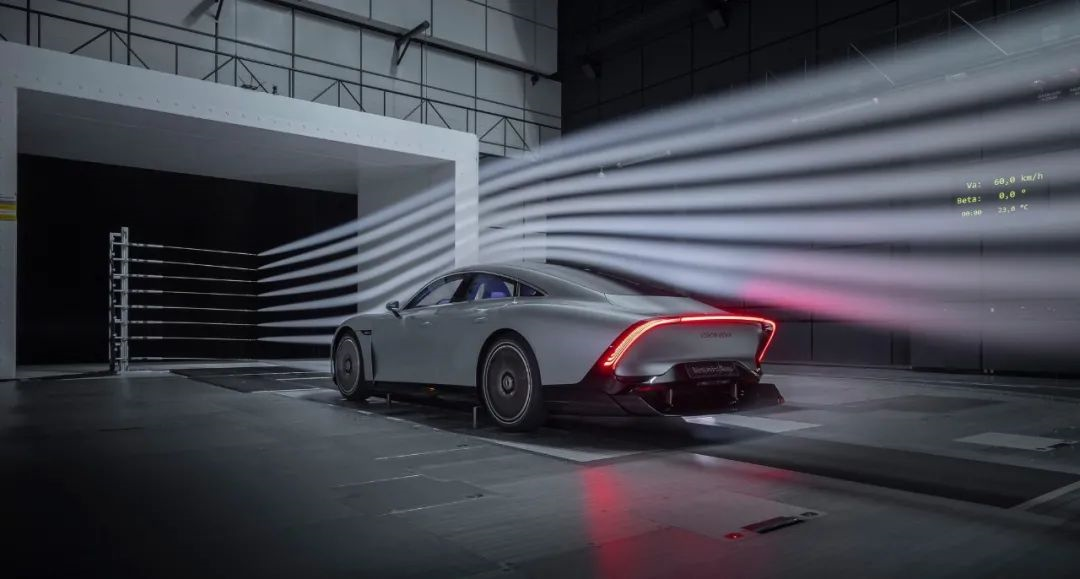 How does Mercedes achieve such a low drag coefficient? We may find some clues from the body structure of the Mercedes VISION EQXX. From the side view of the car, the new model adopts a long-tail shape, which is very similar to McLaren’s Speedtail.
How does Mercedes achieve such a low drag coefficient? We may find some clues from the body structure of the Mercedes VISION EQXX. From the side view of the car, the new model adopts a long-tail shape, which is very similar to McLaren’s Speedtail.
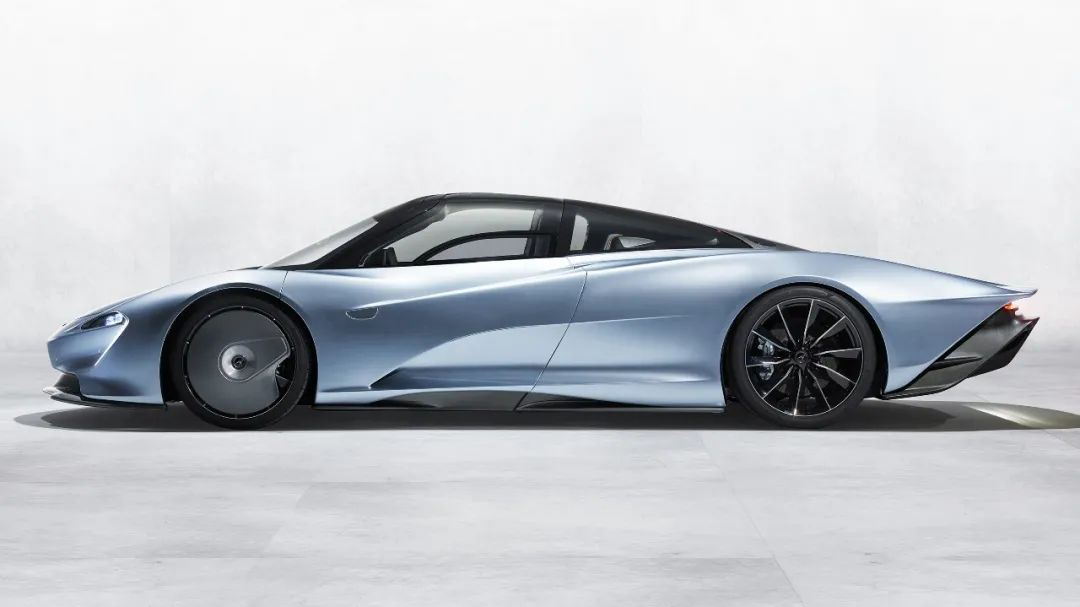
The long-tail shape is not a new design language that emerged in recent years, and it was first used in the racing field.
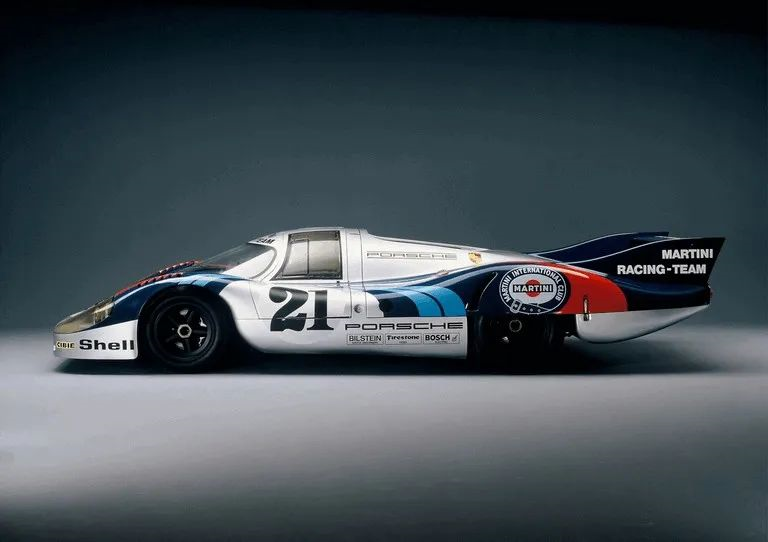
In the 1960s, Porsche launched the 917 racing car to compete in various high-standard Grand Prix and endurance races. At that time, the understanding of downforce in the racing field was not as profound as it is today, and everyone unanimously believed that reducing the drag coefficient as much as possible would be beneficial to improving the top speed of the car, and “speed” is always the truth on the track. The Porsche 917 with a long-tail shape is the racing car that was built by integrating the new understanding of low drag shapes at that time.
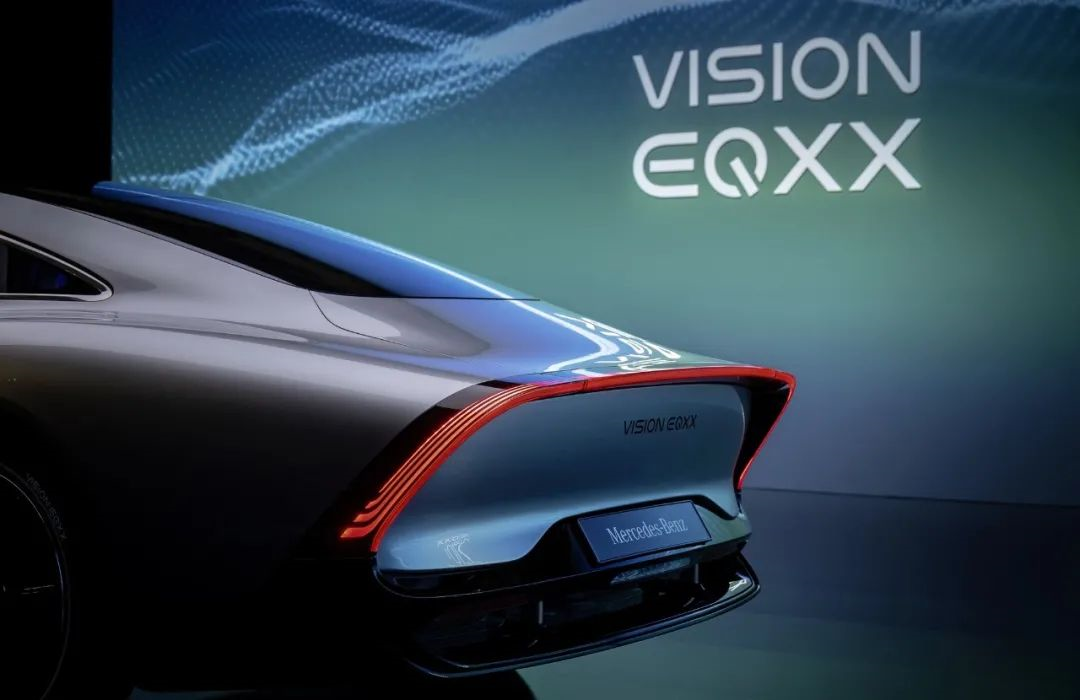
However, shortly after the Porsche 917 was delivered to the team for use, an accident occurred in the bend, and the low drag shape would bring lift to the vehicle rather than downforce. Although it can increase the top speed, it also reduces the maximum speed in the bend. Later, Porsche launched an improved version of the car-the 917K with a short tail shape, which can better cope with low-speed tracks and can also obtain more downforce in bends.

The importance of drag coefficient to electric vehicles is self-evident. In the era of fuel-powered cars, except for sports cars, few products brought up drag coefficient. But for electric vehicles, lower drag can significantly improve the endurance ability of electric vehicles. Moreover, achieving a drag coefficient of 0.17Cd for a car can also be called an industrial miracle.However, we should still approach the drag coefficient of the VISION EQXX 0.17Cd with caution. During the Christmas period, the United States Environmental Protection Agency (EPA) announced the range results of the Mercedes-Benz EQS and BMW iX. Under CLTC driving cycle, the maximum range of the Mercedes-Benz EQS 450+ version is up to 849 kilometers, while the maximum range of the BMW iX is 660 kilometers. However, the EPA test results showed that the maximum range for the former same-version model is only 563 kilometers, while the latter’s maximum range is 524 kilometers.
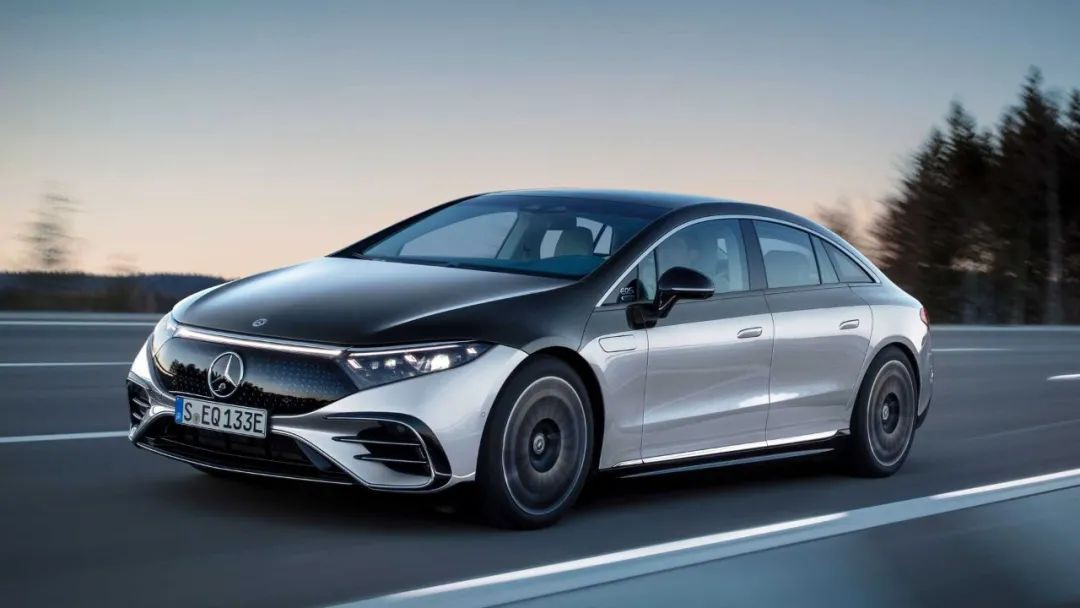
EPA is currently recognized as the most stringent range test standard, with multiple variations and complexities. We can clearly see that the range of the Mercedes-Benz EQS is reduced to a greater extent under more complex driving conditions. After comparing the two products mentioned above, both vehicles have a curb weight of 2.5 tons and the battery capacity is almost the same. If we assume that both luxury brands have equally efficient transmission systems for their flagship products, the only variable that differs significantly is the drag coefficient.
The drag coefficient of the Mercedes-Benz EQS is 0.2Cd, while that of the BMW iX is 0.25Cd. This comparison reflects a problem – when we return to the normal driving scenario, the impact of the drag coefficient on the range of electric vehicles is not as significant as we imagine. Therefore, we should not celebrate the 0.17Cd drag coefficient, but rather focus on the 95% efficiency of the propulsion unit and the 1.75-ton curb weight reduction achieved through lightening. A multi-dimensional improvement of the range performance is the core competitiveness of the Mercedes-Benz VISION EQXX in electrification. Of course, landing the product in the market is also a necessary challenge for EVs to achieve a range of over 1000 kilometers.
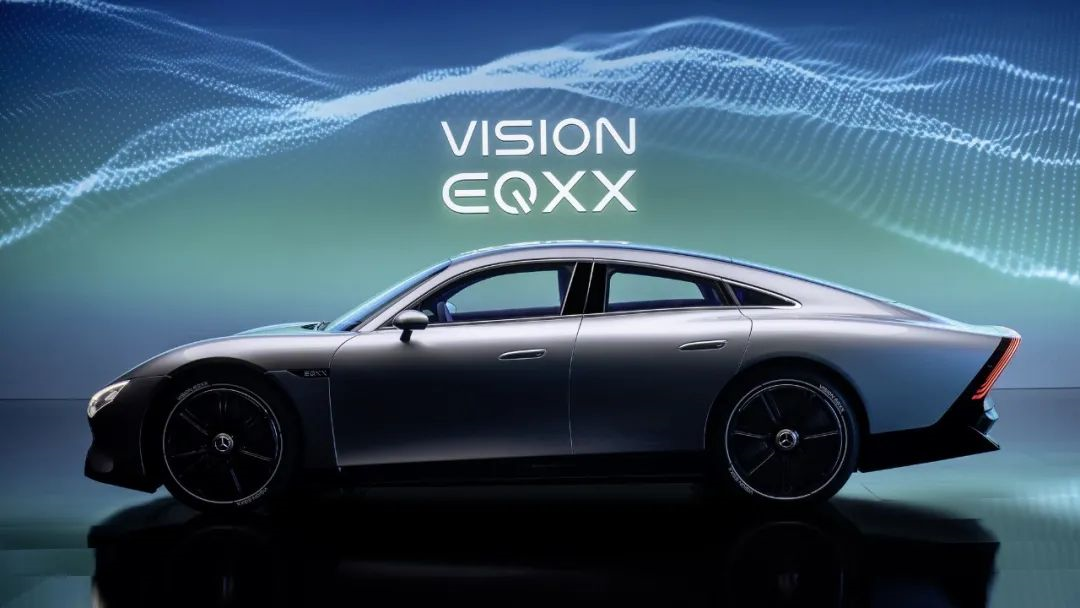
If the Mercedes-Benz VISION EQXX goes into mass production, what will its positioning be?
Since the current CTO of Mercedes-Benz stated that the VISION EQXX is approaching the appearance of products in 2024, let us speculate in which segment this product will be positioned.
Mercedes-Benz Chief Designer Gordon Wagener said that “the EQXX platform is one level smaller than the recently tested EQE.” Will it be Mercedes-Benz’s pure electric C-Class sedan?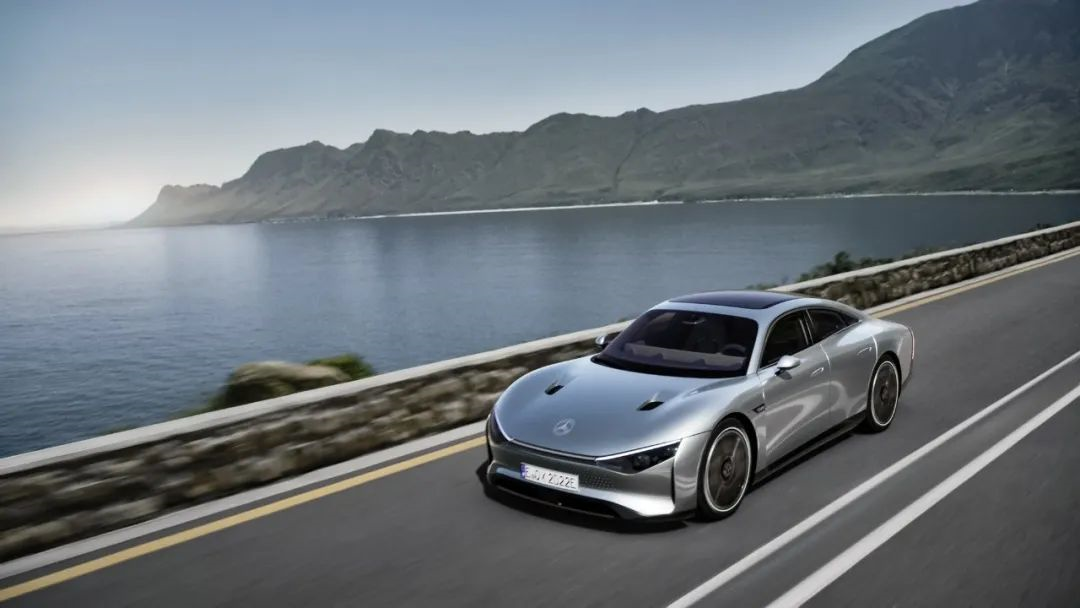
In terms of size, the wheelbase of VISION EQXX is 2.8 meters, which is very close to the current standard wheelbase of the C-Class. However, I personally think that VISON EQXX is not the prototype of the future electric C-Class. For mainstream consumers, the long tail shape and unique front face design are highly challenging.
The C-Class sedan is Mercedes-Benz’s best-selling product in the global market. I think Mercedes-Benz is unlikely to challenge the consumer market with an innovative product with a unique style, and the long tail shape occupies some of the “usable space” inside the car, which will affect practicality. Therefore, the mass-produced version of VISION EQXX may be in a relatively high-end market segment, playing the role of setting a benchmark for advanced electric vehicles, rather than directly competing with the products of rising new forces such as Tesla in the mainstream market.
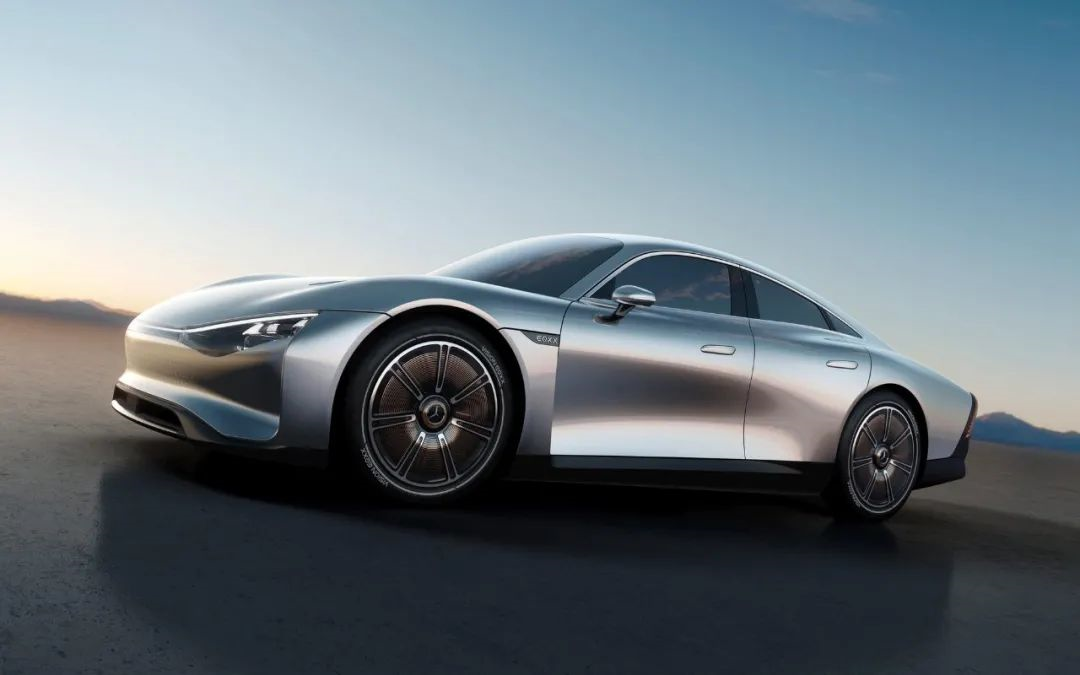
However, it is also possible for Mercedes-Benz VISION EQXX to be positioned in the C-Class sedan’s segment, as Mercedes-Benz may want to completely overturn consumers’ inherent perceptions of product sequences and stimulate consumers’ awareness of pure electric products with innovative electric vehicle products. After all, if we look at electric vehicles from a completely new perspective, they should be different from traditional fuel vehicles.
Conclusion
There has always been a view in the industry that if traditional car companies go “all-in” and allocate most of their resources to the pure electric field, they will develop products much faster than new forces in the automobile industry. This view was once based on speculation about the technical reserves of traditional car companies. The appearance of Mercedes-Benz VISION EQXX proves that traditional car companies have never lacked resources in developing electric products, and there is no gap between new forces and traditional car companies in electrification, and the next battleground will be in the field of intelligence.
